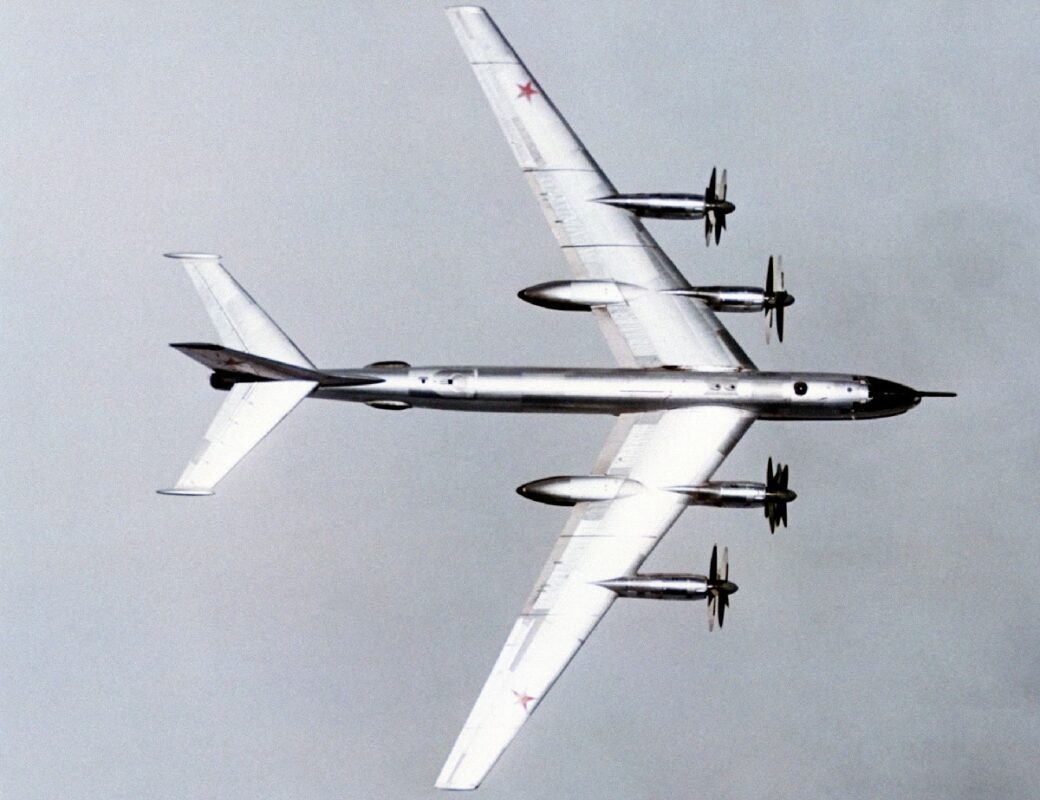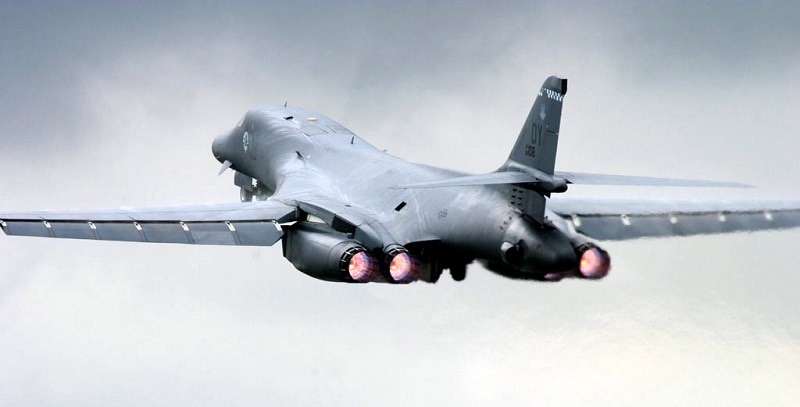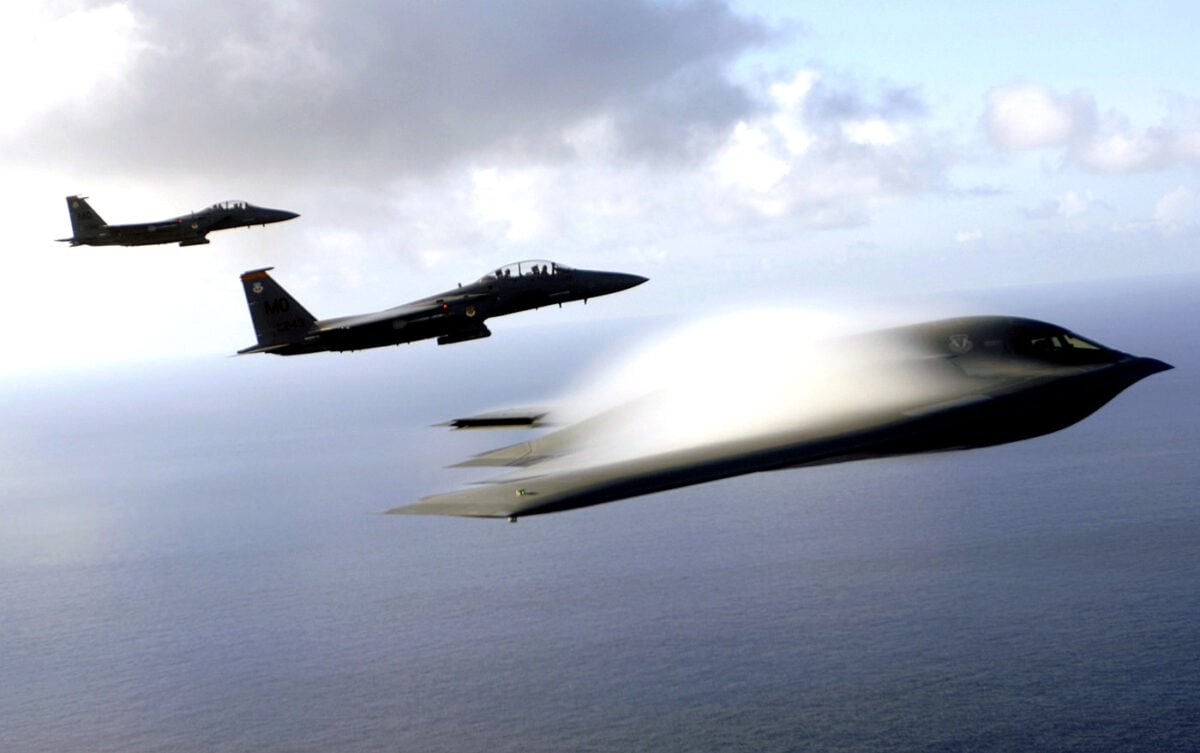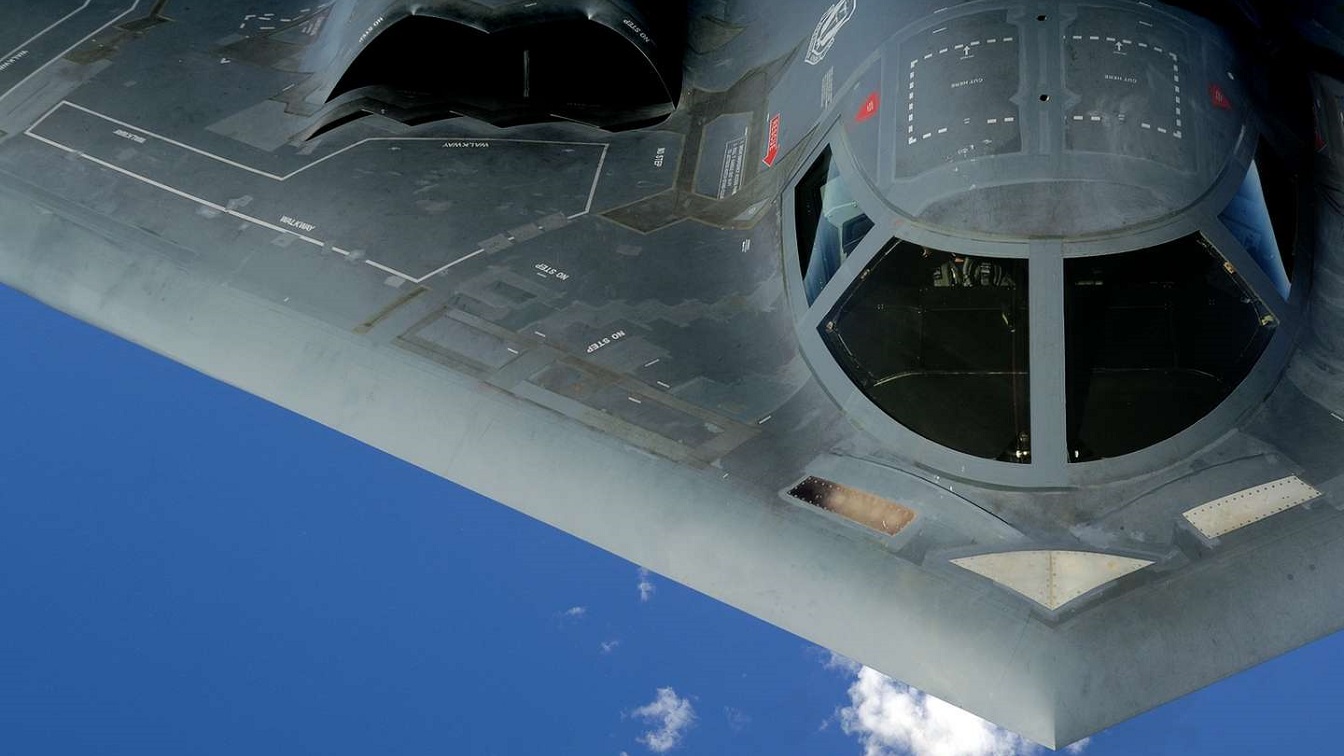The United States and Russia are just two of only three nations – with China being the third – that continue to operate long-range strategic bombers in the 21st century. What is especially notable about their respective bombers fleets of the United States Air Force and the Russian Aerospace Forces is that many of the planes in service are actually older than the crews serving on the aircraft.
Despite their age, these long-range planes are still capable – especially as efforts have been made to keep them continually updated. 19FortyFive reached out to analysts at Janes, the defense intelligence provider, to discuss the capabilities of the current workhorses of the skies.
The Russian Tu-95MS
The Russian Tupolev Tu-95MS (NATO reporting name “Bear-H”), the highly updated heavy bomber that was developed from the Cold War era aircraft that first entered service in 1952, may be among the oldest aircraft designs still flying anywhere in the world, yet it continues to log lots of miles in the sky.
As the only propeller-powered bomber in operation, it is far from the fastest aircraft, but it was developed as an aircraft that could fly a distance of 5,000 miles and strike targets within the United States from territory within the former Soviet Union. The current models have a reported range that is greater than 9,300 miles (15,000 km).
“The Tu-95MSM is to serve with Russia for at least another couple of decades and remains operationally effective,” analysts at Janes explained to 19FortyFive.

Image: Creative Commons.
“In late 2009, the Russian Ministry of Defence embarked on a multi-stage Tu-95MS upgrade program,” they added. “This work is ongoing and includes new radars, flight control and navigation systems, self-defence suites, engines, and propellers. The plan is to gradually modernize most of the in-service Tu-95MS aircraft to the Tu-95MSM standard. The Tu-95MS is the world’s fastest in-service turboprop aircraft that is economical to operate (much more so than the supersonic Tu-160). It is classified as a missile carrier, not a bomber, since it carries only cruise missiles. Despite its dated looks it is armed with some of the most advanced cruise missiles in the VKS Long Range Aviation service, such as the stealthy Kh-101/102.”
The United States B-1B Lancer
The sweep-wing B-1B bomber was developed to conduct high-speed, low-altitude penetration missions during the Cold War. The Lancer – commonly known to its crews as the “Bone” as its designation was “B-One” – took its first flight in December 1974. At the time, it was a major leap forward in aviation design, and while smaller than the B-52 bombers, its advanced engines and high-lift, variable-sweep wing allowed it to carry twice the weapon load at a much greater distance and higher speed.
Though the B-1 was designed initially to strike cities deep within the Soviet Union, it only saw its first combat deployment in December 1998 during Operation Desert Fox, where the Lancer successfully penetrated Iraqi air defenses to destroy Republican Guard barracks.
Last year, the Air Force retired 17 of its oldest and most worn-out Lancer bombers to allow its maintainers to focus on keeping the remaining 45 bombers operating. Those aircraft are expected to stay in service at least until the B-21 Raider enters service at the end of the decade.

B-1B Bomber. Image: Creative Commons.
“The USAF has not announced the planned IOC (Initial Operation Capability) or FOC (Full Operational Capability) timeline (of the B-21), except to say IOC is expected in the mid-2020s,” Janes’ analysts explained to 19FortyFive. “However, the pace of procurement will be slow so FOC will take more time. The USAF plans to procure 100 B-21s and final delivery is not likely until the late 2030s. The B-1 will have to remain in service until about 40 B-21s are in service it order to avoid capability gaps. This means the B-1 will be in use at least through the early 2030s. It is being upgraded to remain operationally effective over this time period. Any slippage in the B-21 timeline will require the B-1 remain in service longer but the B-21 is using mature technology to avoid this possibility.”
The United States B-2 Spirit
The first B-2 Spirit rolled out of the bomber’s final assembly facility in Palmdale, Calif., in November 1988 and it flew for the first time on July 17, 1989. Originally, the Air Force had plans for 132 B-2 Spirits, but as the aircraft was a product of the Cold War, it was originally designed to penetrate Soviet air defenses.
Following the dissolution of the Soviet Union, Congress slashed the budget for the Spirit, which cut production to just twenty-one aircraft.
The combat effectiveness of the B-2 was first proved during Operation Allied Force, the NATO-led air strikes against Serbia, where the Spirit was responsible for destroying 33 percent of all Serbian targets in the first eight weeks, which included flying nonstop to Kosovo from its home base at Whiteman Air Force Base (AFB) Missouri and back.

ANDERSEN AFB, Guam — A B-2 Spirit, 393rd Expeditionary Bomb Squadron and F-15E Strike Eagles, 391 Expeditionary Force Squadron, fly in formation across the Pacific Ocean. The deployed fighters and bomber represent Pacific Air Force’s projection of Global Strike and resolve for U.S. allies in the Pacific theater. They are assigned to Whiteman Air Force Base, Mo. (U.S. Air Force photo by Tech. Sgt. Cecilio Ricardo)
The bombers played a significant role during Operation Enduring Freedom in 2001, which began following the terrorist attacks on the World Trade Center (WTC) and Pentagon. The B-2 successfully flew one of its longest missions to date from Missouri to Afghanistan and back. The B-2 went on to complete its first-ever combat deployment in support of Operation Iraqi Freedom, where it flew 22 sorties from a forward operating location and 27 sorties from Whiteman AFB, where it delivered more than 1.5 million pounds of munitions.
As with the B-1, the B-2 will see its service life cut short.
“The B‐2A fleet had been slated to remain in service until about 2050. However, the USAF now plans to begin retiring the B‐2A once the B‐21 is operational,” said the experts at Janes told 19FortyFive. “The B-2A fleet is smaller than that of the B-1 so will be easier to replace but it is unclear whether the USAF will prioritize retiring the B-1 or B-2A when the B-21 enters service. Thus, the B-2A too will likely be in service through the early 2030s.”
Expert Biography: A Senior Editor for 1945, Peter Suciu is a Michigan-based writer who has contributed to more than four dozen magazines, newspapers, and websites with over 3,000 published pieces over a twenty-year career in journalism. He regularly writes about military hardware, firearms history, cybersecurity, and international affairs. Peter is also a Contributing Writer for Forbes. You can follow him on Twitter: @PeterSuciu.

